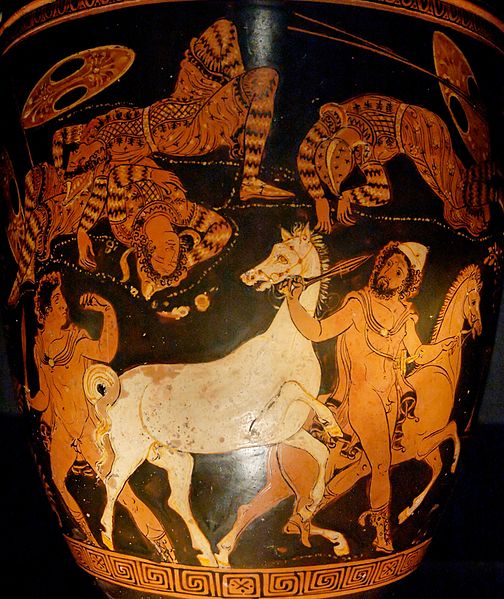Telemachus, in Greek mythology, is the son of Odysseus and Penelope, who is a central character in Homer's Odyssey. When Telemachus reached manhood, he visited Pylos and Sparta in search of his wandering father. On his return to Ithaca, he found that Odysseus had reached home before him. Then father and son slew the suitors who had gathered around Penelope. According to later tradition, Telemachus married Circe after Odysseus’ death.
Telemachus departing from Nestor, painting by Henry Howard (1769–1847)
Slaughter of the suitors by Odysseus and Telemachus, Campanian red-figure bell-krater, ca. 330 BC, Louvre (CA 7124)
Statue depicting Telemachus
In Greek and Roman mythology, Odysseus, also known by the Latin variant Ulysses, is a legendary Greek king of Ithaca and the hero of Homer's epic poem the Odyssey. Odysseus also plays a key role in Homer's Iliad and other works in that same epic cycle.
Head of Odysseus from a Roman period Hellenistic marble group representing Odysseus blinding Polyphemus, found at the villa of Tiberius at Sperlonga, Italy
Menelaus and Meriones lifting Patroclus' corpse on a cart while Odysseus looks on, Etruscan alabaster urn from Volterra, Italy, 2nd century BC
Odysseus and Diomedes stealing the horses of Thracian king Rhesus they have just killed. Apulian red-figure situla, from Ruvo
Roman mosaic depicting Odysseus at Skyros unveiling the disguised Achilles; from La Olmeda, Pedrosa de la Vega, Spain, 5th century AD







